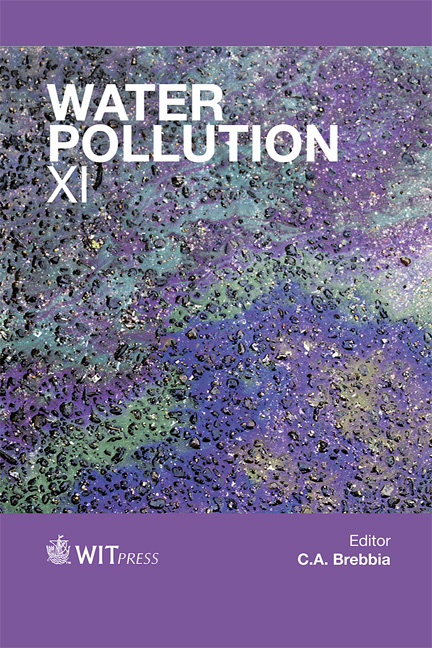Phthalate And Alkylphenol Removal Within Wastewater Treatment Plants Using Physicochemical Lamellar Clarification And Biofiltration
Price
Free (open access)
Transaction
Volume
164
Pages
12
Page Range
357 - 368
Published
2012
Size
381 kb
Paper DOI
10.2495/WP120311
Copyright
WIT Press
Author(s)
A. Bergé, J. Gasperi, V. Rocher, A. Coursimault & R. Moilleron
Abstract
Endocrine disrupting compounds (EDCs) have been found in surface waters worldwide. They are known for exerting adverse effects on animals of many species, including humans. EDCs comprise compounds of anthropogenic origin. They can enter waterways via either discharges from wastewater treatment plant (WWTPs), combined sewer overflows (CSO) or atmospheric deposition. In this work, the fate and removal of four phthalates and two alkylphenols: Diethyl phthalate (DEP), Di-n-Butyl phthalate (DnBP), Butyl Benzyl phthalate (BBP), Di-(2-ethylhexyl) phthalate (DEHP), nonylphenol (NP) and octylphenol (OP) were investigated within a wastewater treatment plant (WWTP) using lamellar clarification and biofiltration. This plant receives about 240,000 m3 d−1 of wastewater. The whole treatment process comprises: screening, grit removal, primary sedimentation using coagulant and flocculant, followed by biofiltration units. Phthalates and alkylphenols were monitored at three locations, including raw sewage, before primary treatment, decanted effluents, before biological treatment, and final effluents, just before discharge to receiving waters. Nine campaigns were performed in 2011 during different seasons. In raw wastewater, DEHP was the major compound (32.42 to 71.88, median 42.95 μg.l-1), followed by DEP (7.00 to 36.03, median 21.00 μg.l-1) and NP (4.08 to 10.63, median 5.95 μg.l-1). Other compounds averaged few μg.l-1. During the WWTP treatment, DEP becomes major contaminant (0.46 to 6.77, median
Keywords
phthalates, alkylphenols, endocrine disrupting compounds, lamellar clarification, biofiltration





